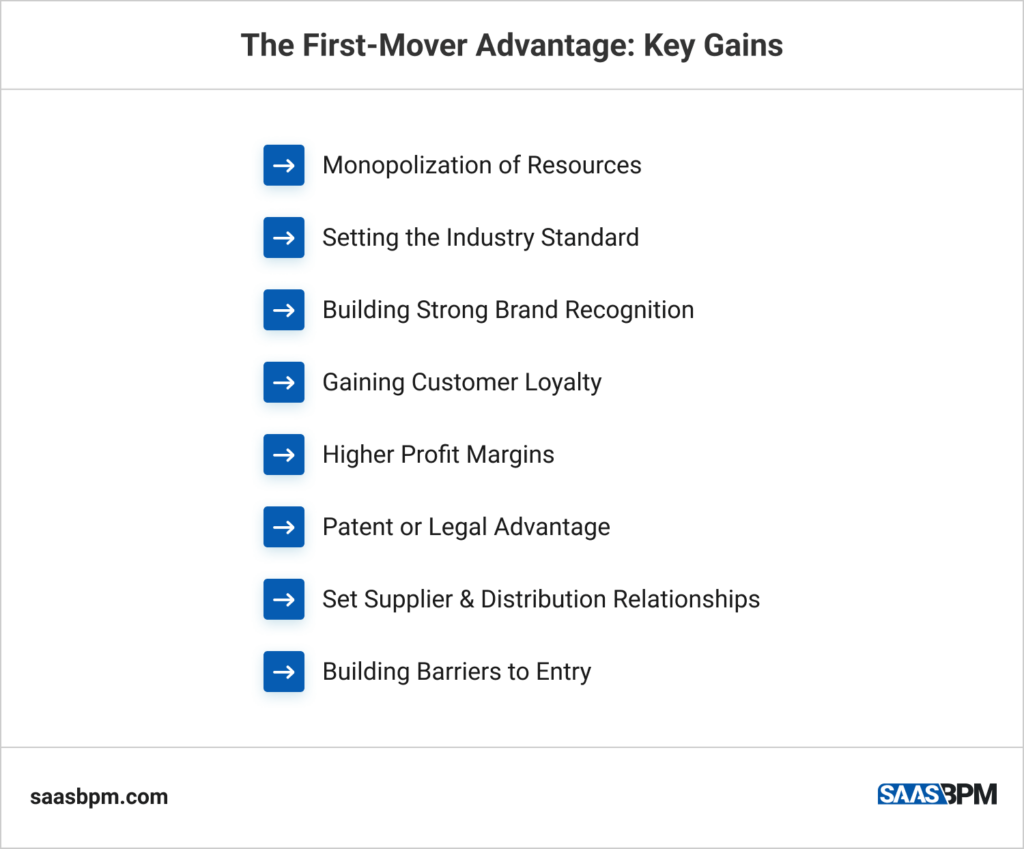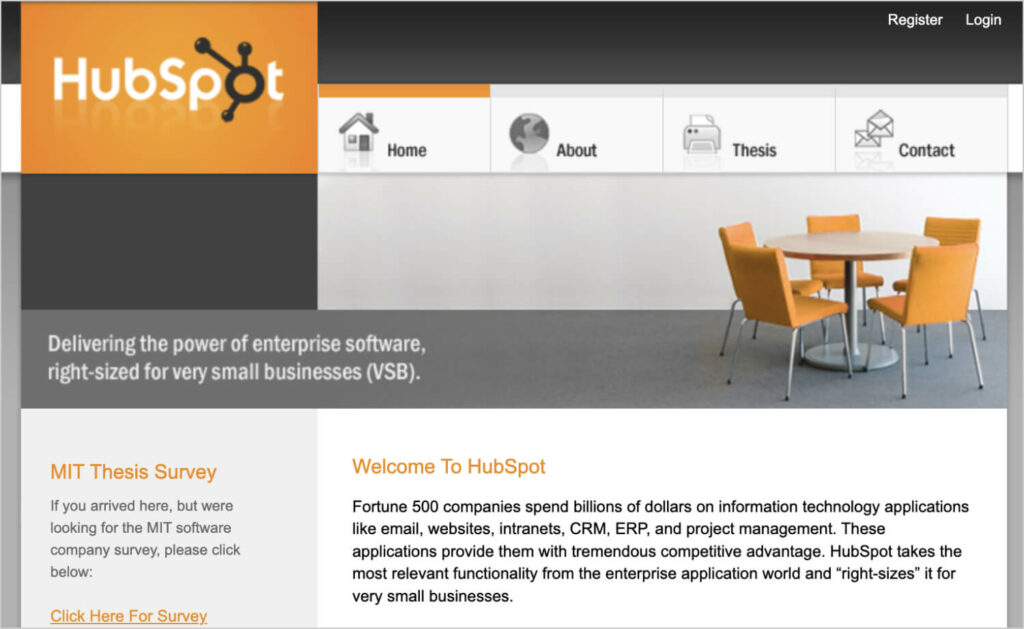When it comes to the world of business and marketing, being the first to penetrate a particular industry niche often results in substantial rewards. The quintessential aspects of competition lie in the realm of innovation, differentiation, and the capacity to lead. These elements converge in the theory of being the first mover. This principle applies widely across various business landscapes. In essence, it’s about discovering and exploiting opportunities before others even become aware of their existence.
The concept known as the “first-mover advantage” encapsulates this strategy, referring to the distinct competitive benefits a business obtains by being the first to introduce a product, service, or technology to the market. Of course, the gains you get depend on factors such as the nature of the industry, the novelty of the concept, and the execution strategy employed by the pioneering entity.
A deeper understanding of the first-mover advantage can prove crucial in formulating effective business strategies. Moreover, it provides a unique perspective through which we can examine the dynamics of the corporate world. In this article, we will delve into the concept of first-mover advantage, discuss its benefits and present some real-life examples to demonstrate its impact.
What Is The First-Mover Advantage?
The first-mover advantage is a theoretical concept that pertains to the competitive benefits gained by a company that pioneers a specific market or industry. They may take various forms, tangible or intangible. Examples include securing a significant market share, building robust brand recognition, or establishing customer loyalty.
Essentially, it signifies the competitive edge attained when a business entity is the trailblazer within its sector. This way, you get to set industry standards and achieve considerable progress before competitors have an opportunity to join the race.
What Are The Benefits Of Being A First Mover In A Market?
Being the initial entity to enter a market equips a company with several advantageous positions, each contributing as a different pillar of potential success. Here are some of the key benefits:

Monopolization of Resources
First movers often have an exclusive claim on scarce resources. These could range from raw materials required in the production process, top-tier talent for their workforce, or even the strategic locations for business operations. By securing these resources, first movers gain a significant edge over subsequent entrants, thereby solidifying their foothold in the market.
Setting the Industry Standard
First movers, by virtue of introducing new products or services, have the opportunity to set the industry standard, thereby influencing customer expectations. Subsequent competitors are then faced with the challenge of either meeting these established standards or offering a compelling alternative. This control over the industry’s norms provides the first movers with a distinct strategic advantage.
Building Strong Brand Recognition
Being the first in the market also opens the door to establishing robust brand recognition. Consumers often associate the pioneering product category with the initial market entrant, creating a mental and emotional linkage. This recognition leads to the formation of a loyal customer base, providing a substantial defensive mechanism against new market entrants.
Gaining Customer Loyalty
One of the significant benefits of being a first mover is the opportunity to establish deep ties with early adopters. These customers, who are typically open to new experiences, may form a strong connection with the brand and product. This loyalty can serve as a solid base for the business and may be difficult for subsequent market entrants to break.
Higher Profit Margins
In the absence of immediate competition, first movers can often command higher prices for their innovative product or service. Customers who perceive the product as unique and valuable are generally willing to pay a premium This, in turn, leads to higher profit margins for the first mover. Over time, these early profits can be reinvested to consolidate market position further.
Patent or Legal Advantage
If the innovation is unique enough, first movers may be able to secure patents or other forms of legal protection. This legal edge can deter competition or at least delay their entry, allowing the first mover more time to consolidate its market position.
Establishing Supplier and Distribution Relationships
Being the first mover often allows a company to establish relationships with suppliers and distributors, setting favourable terms. These partnerships can provide a substantial advantage by ensuring a steady supply of necessary inputs and an effective distribution network.
Building Barriers to Entry
First movers can create barriers to entry for future competitors. These barriers could be in the form of technological leadership, customer loyalty, exclusive agreements with suppliers, or scale economies due to large volumes. These obstacles can slow down or deter the entry of competitors, thereby protecting the first mover’s market position.
Examples of the First-Mover Advantage

While Google was not the first search engine to exist, it was the first to implement an effective system for ranking web pages based on relevance and popularity, revolutionising the online search process. This transformative approach allowed Google to maintain the lion’s share of the market. Today, the term “Google” has virtually become synonymous with online search, representing an outstanding example of first-mover advantage.
HubSpot

HubSpot was among the first companies to popularise the concept of inbound marketing. This innovative strategy flipped traditional marketing methods on their head by prioritising the attraction of customers through personalised content and interactions. As a result, HubSpot carved out a leadership position within the field of marketing software, demonstrating the power of first-mover advantage.
Coca Cola

Coca Cola capitalised on the first-mover advantage by becoming the first company to bottle and sell carbonated beverages on a grand scale. By doing so, the company was able to establish its product as the standard for cola drinks, creating a potent brand identity that continues to dominate the market well over a century later.
Conclusion
A comprehensive understanding of the first-mover advantage provides valuable insights into the complex dynamics of competition and innovation in the business world. It highlights the substantial rewards that can be obtained through innovation and the courage to seize opportunities before others.
However, it is essential to note that being the first mover, while providing substantial advantages, does not guarantee unending success. The company must also effectively utilise its leading position, continually innovate, and adapt to changing market conditions to sustain its advantage.
In conclusion, the narratives of Google, HubSpot, and Coca Cola serve as illustrative case studies of how first movers can shape entire industries and secure enduring success. These examples remind us of the potential impact of being the pioneer. Also, they demonstrate the significant role that innovative and strategic thinking plays in long-term business success. In order to inspire your team with enthusiasm and first-mover spirit, make sure you host a collaborative environment with SaaS BPM. Stay on top of necessary changes and enjoy smooth communication. Use our business process management tool – browse the available plans and test it out!

